Fixing wall anchor holes that are too big is an essential skill to have as a homeowner or renter. It can save you time, money, and headaches in the long run. Wall anchors are commonly used when hanging heavy items on walls such as shelves, mirrors, or TV mounts. They provide extra support and stability by distributing the weight of the object over a larger area. However, sometimes these anchors may not hold up well if they are installed incorrectly or if the wall material is weak.
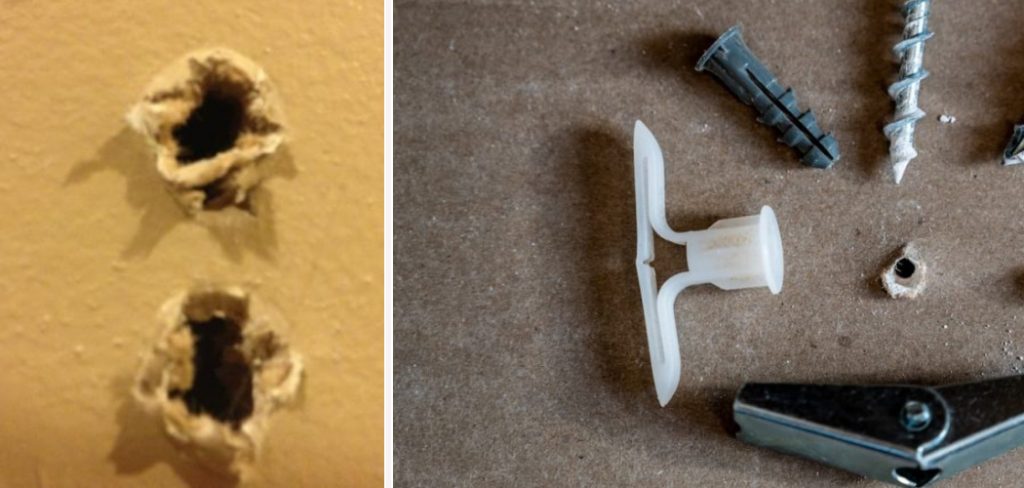
The main advantage of fixing wall anchor holes that are too big is the ability to save time and money on repairs. Instead of having to replace the entire drywall or reposition the anchor, you can easily fix the oversized hole using simple techniques. This also allows for a cleaner and more seamless appearance, as there won’t be any visible damage or patches on your walls. In this blog post, You will learn in detail how to fix wall anchor holes that are too big.
Step by Step Processes for How to Fix Wall Anchor Holes That Are Too Big
Step 1: Inspect the Damage
The first step in fixing wall anchor holes that are too big is to carefully inspect the damage. This will help you determine the extent of the hole and what materials you will need for the repair. You should also check for any underlying issues that may have caused the anchors to become loose or fall out.
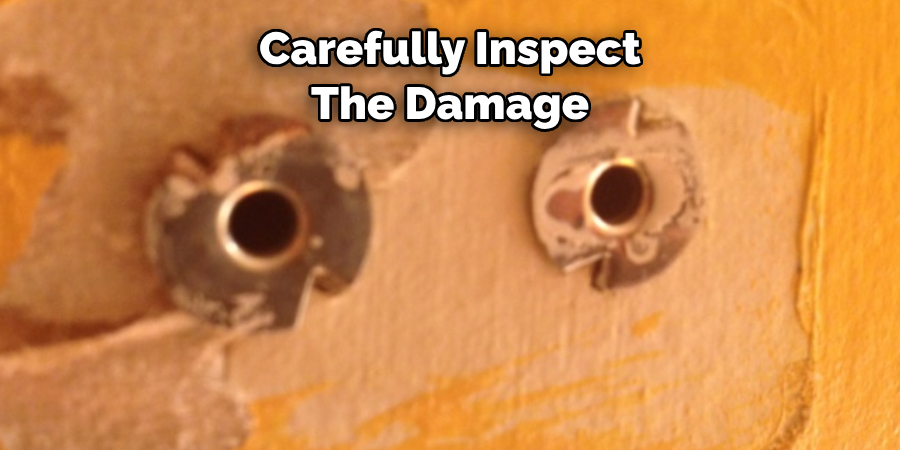
Step 2: Gather Necessary Materials
Once you have assessed the damage, gather all the necessary materials for repairing the wall anchor holes. This may include spackle or putty, a putty knife, sandpaper, primer, paint, and new anchors. Using pliers or a screwdriver, carefully remove any remaining pieces of the old anchor from the wall. Make sure to clean out the hole thoroughly to ensure a smooth and secure repair.
Step 3: Fill the Hole with Spackle or Putty
Take a small amount of spackle or putty and fill the hole, making sure to press it in firmly. Smooth out the surface with a putty knife and let it dry according to the manufacturer’s instructions. Once the spackle has dried, use sandpaper to smooth down any rough edges or excess material. This will help create a flat and even surface for your new anchor.
Step 4: Prime the Area
Before painting, prime the repaired area with a quality primer. This will help seal in any remaining imperfections and ensure that your paint adheres properly. Select a paint color that matches your wall and carefully paint over the primed area. You may need to apply multiple coats for full coverage.
Step 5: Preparing New Anchors
While the paint is drying, prepare your new anchors by following the manufacturer’s instructions. Make sure they are the appropriate size and weight for the desired object you will be hanging on your wall. Once the paint has dried completely, follow the manufacturer’s instructions to install your new anchor into the repaired hole. Make sure it is securely in place before using it to hang any objects.
Step 6: Test Stability and Make Adjustments If Necessary
Lastly, test the stability of your newly repaired wall anchor. If there are any issues or the anchor feels loose, make any necessary adjustments to ensure a secure hold. Now you can confidently hang your desired object on your wall without worrying about any potential damage or accidents.
Remember to always follow manufacturer’s instructions and take proper safety precautions when using anchors in your walls. Continue to maintain and inspect for any future issues that may arise with your anchors, as regular maintenance will prevent them from becoming too big of a problem in the future.
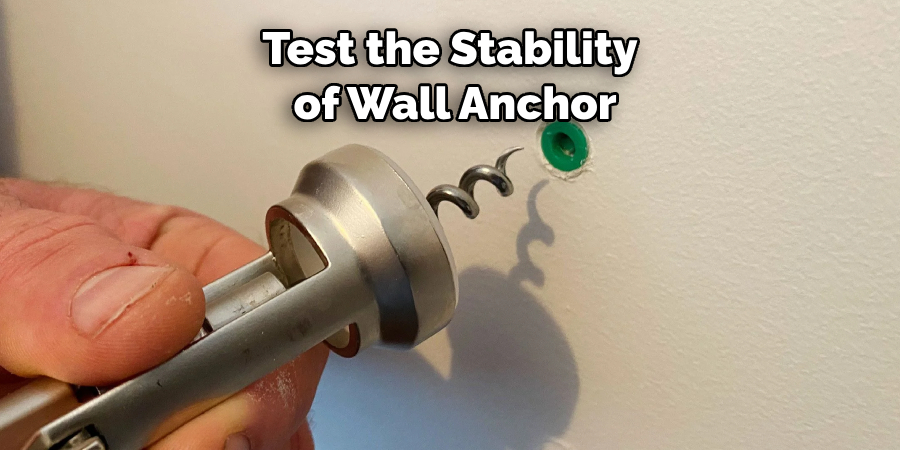
Safety Tips for How to Fix Wall Anchor Holes That Are Too Big
- Before attempting to fix a wall anchor hole, it is important to make sure that the wall is not load-bearing. A load-bearing wall supports the weight of the structure and removing or altering it can cause serious structural damage.
- When fixing a wall anchor hole, use the correct tools and equipment for the job. This will not only ensure a better end result but also reduce the risk of accidents or injuries.
- It is important to wear safety gear such as goggles, gloves, and a dust mask when working with power tools or handling potentially hazardous materials like drywall dust.
- To avoid making holes that are too big in the first place, use a stud finder to locate the studs behind the wall before drilling. This will help prevent accidental damage and save time in the long run.
- Always follow manufacturer instructions when using wall anchor systems. Different types of anchors require different installation methods and failure to follow instructions can result in an improperly secured object or damage to the wall.
- If you are unsure about how to fix a wall anchor hole that is too big, it is best to seek professional help. A qualified contractor or handyman will have the expertise and experience to properly repair the hole without causing further damage.
- Finally, always practice caution when working with power tools and handling sharp objects. Keep children and pets away from the work area and store tools safely after use.
By following these safety tips and precautions, you can successfully fix wall anchor holes that are too big without any accidents or setbacks. Remember to always prioritize safety when completing any DIY project.
What Causes a Wall Anchor Hole to Become Too Big?
Wall anchor holes are used to secure items such as mirrors, shelves, and other household fixtures to the wall. However, sometimes these holes can become too big over time due to various reasons. Some of the most common causes of wall anchor holes becoming too big include:
- Wear and tear: With repeated use or movement of the secured item, the wall anchor hole can begin to expand and become loose.
- Improper installation: If the wall anchor was not initially installed correctly, it may not be able to hold weight properly, leading to a larger hole.
- Moisture damage: Exposure to moisture or water can cause the surrounding material (such as drywall) to weaken and crumble, enlarging the wall anchor hole.
- Incorrect size anchor: Using an anchor that is too small for the intended weight can put additional stress on the hole, causing it to become bigger over time.
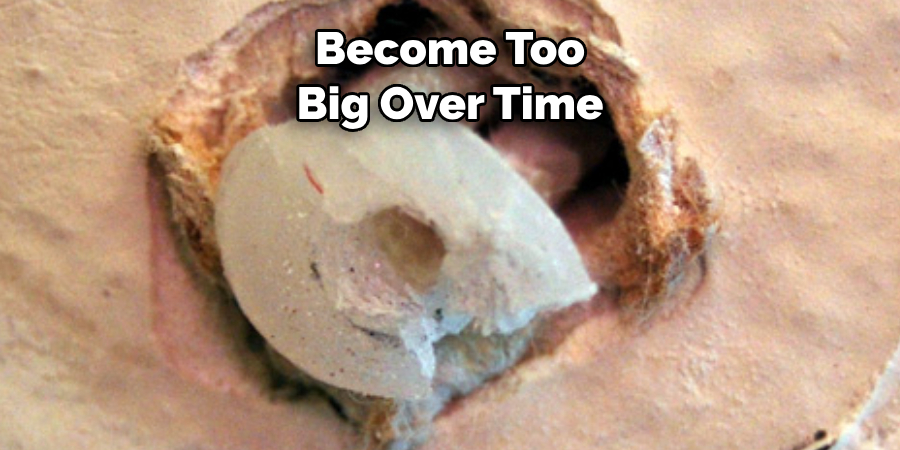
By understanding the potential causes of a wall anchor hole becoming too big, you can take preventative measures to ensure this does not happen in the future. However, if you are currently facing the issue of a large wall anchor hole, there are steps you can take to fix it.
Are There Any Alternative Solutions to Fixing an Oversized Wall Anchor Hole?
If the wall anchor hole is only slightly larger than necessary, there are a few alternative methods you can try to fix it without having to replace the anchor completely:
1. Use Toothpicks or Wooden Dowels
Inserting toothpicks or wooden dowels into the existing hole can help fill in the space and provide additional support for the anchor.
2. Fill with Spackle
Spackling paste can fill in the extra space around the anchor and harden, creating a new secure base for the anchor.
3. Use a Larger Anchor
If the current hole is too large for the existing anchor, you can try using a larger size anchor to fit snugly in the hole.
However, if these solutions do not work or if the wall anchor hole is significantly oversized, it may be best to remove and replace the wall anchor. This will ensure proper support and prevent any potential accidents or damages caused by an insecure fixture.

How Do You Prevent Wall Anchor Holes From Becoming Too Big in the First Place?
There are a few steps you can take to prevent wall anchor holes from becoming too big and avoid having to fix them in the first place. Here’s what you can do:
- Use the right size of drill bit: When installing wall anchors, make sure to use the correct size of drill bit for the anchor. If you use a larger or smaller one, it can result in a hole that is either too big or too small.
- Use an appropriate amount of force: When drilling into the wall, be careful not to apply too much pressure as this can cause the hole to become bigger than necessary.
- Avoid over-tightening screws: While using a screwdriver or drill to secure your anchor, be mindful not to over-tighten the screw as this can also cause the hole to enlarge.
- Be mindful of wall material: Different types of walls require different installation techniques and tools. For example, drywall may require a different approach than brick or concrete.
- Follow instructions carefully: When using wall anchors, be sure to follow the instructions carefully. This includes selecting the right type and size of anchor for your specific needs.
With these preventive measures in mind, you can reduce the chances of creating oversized wall anchor holes.
Are There Any Common Mistakes to Avoid When Attempting to Fix an Oversized Wall Anchor Hole?
When it comes to fixing wall anchor holes that are too big, there are a few common mistakes that people tend to make. These mistakes can end up causing more damage and leading to a bigger repair job than anticipated. In this section, we will discuss some of the most common mistakes and how you can avoid them when attempting to fix an oversized wall anchor hole. One of the biggest mistakes people make is using the wrong size or type of wall anchor for the job.
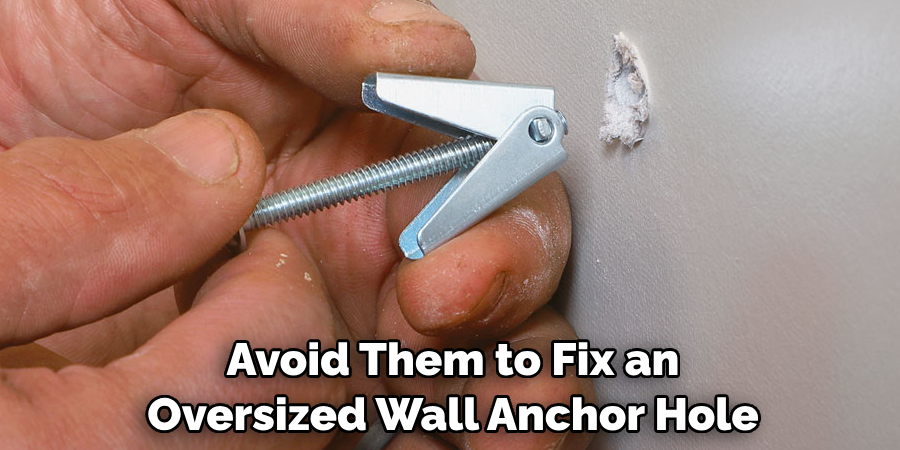
It is important to carefully choose the appropriate size and type of wall anchor based on the weight and size of the object being hung. Using a smaller or weaker anchor in an attempt to save time or money can lead to an insecure attachment and potentially cause further damage. Another common mistake is not properly preparing the wall before attempting to fix an oversized anchor hole. It is important to clean the area around the hole and remove any loose debris or drywall particles. This will ensure a smooth surface for the new anchor to adhere to.
Conclusion
In conclusion, fixing wall anchor holes that are too big is not as difficult as it may seem. By following the steps outlined in this blog, you can easily fix any oversized wall anchor hole and ensure a secure attachment for your shelves, hooks, or other wall-mounted items. Remember to always use the right tools and materials for the job, such as drywall anchors and spackle or joint compound. Taking the time to accurately measure and drill proper-sized pilot holes will also prevent these issues from occurring in the first place.
If you do find yourself with an oversized wall anchor hole, there are several methods you can try to fill and repair it. These include using toothpicks or wooden dowels with some glue, expanding foam filler, or drywall tape and compound. Each method has its own advantages and may work better depending on the size and location of the hole. I hope this article has been beneficial for learning how to fix wall anchor holes that are too big. Make Sure the precautionary measures are followed chronologically.
